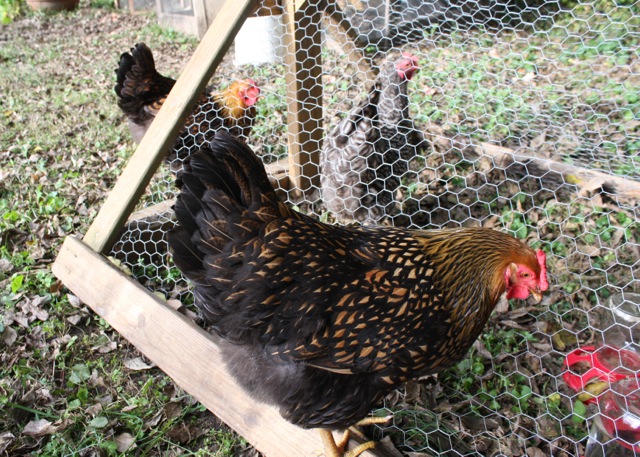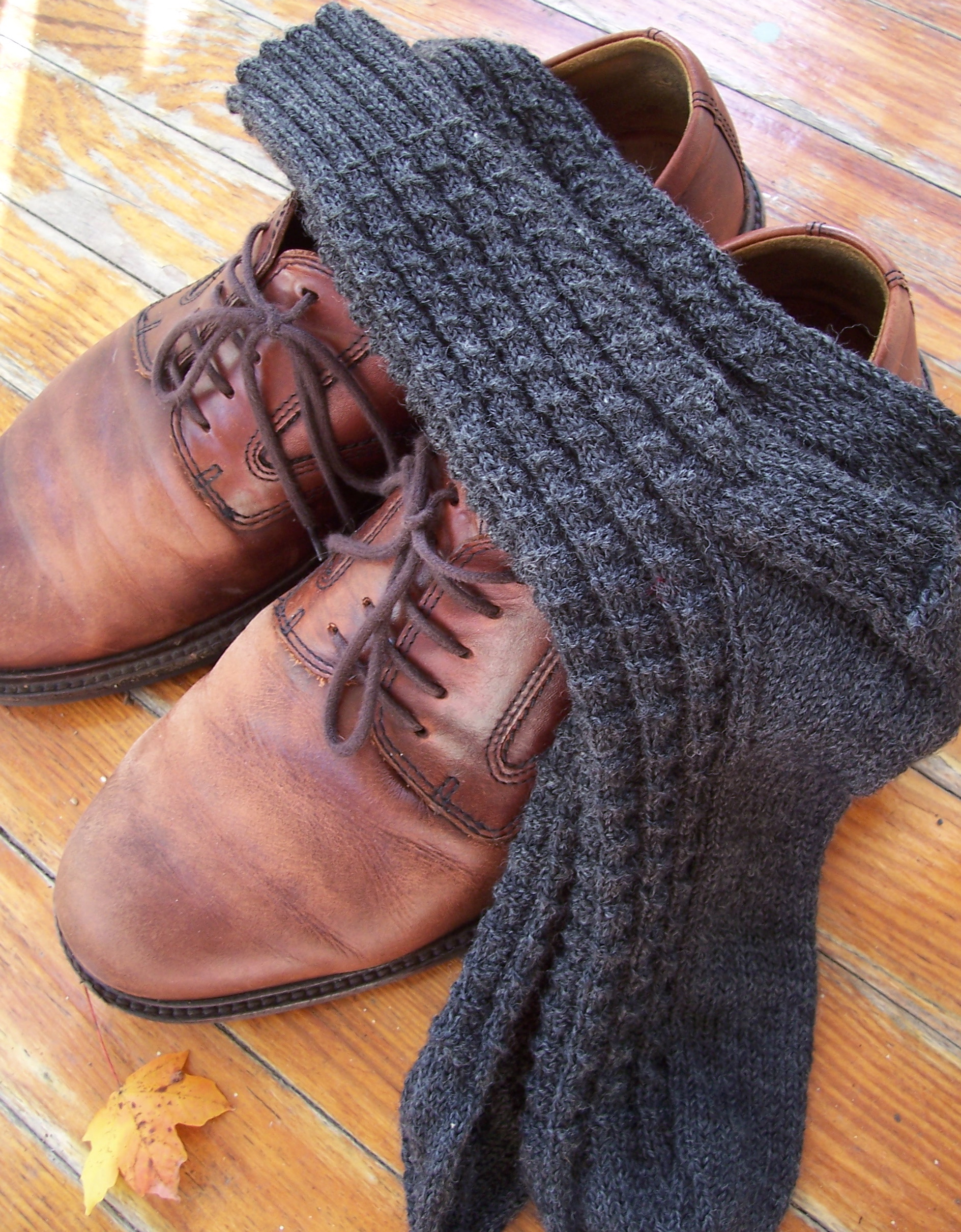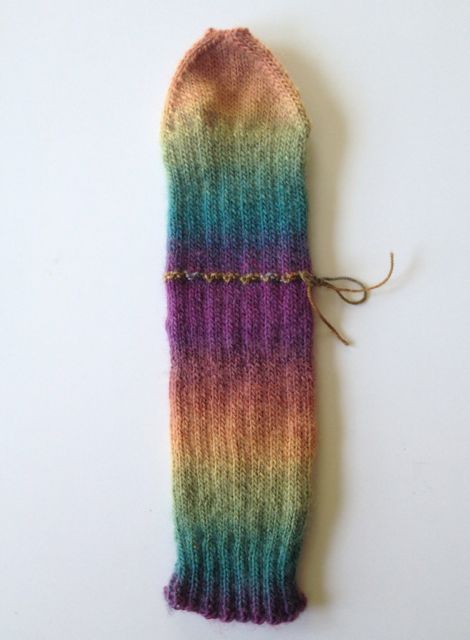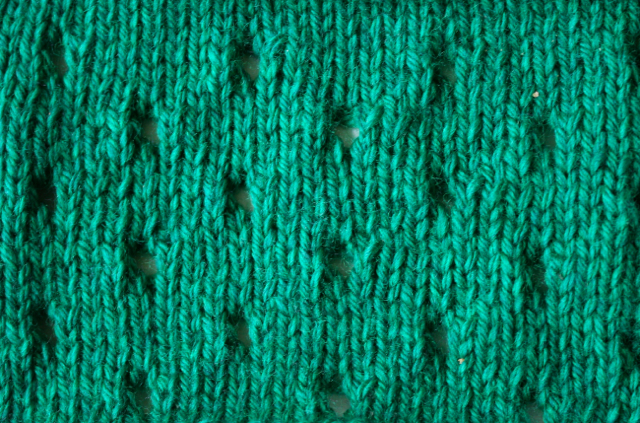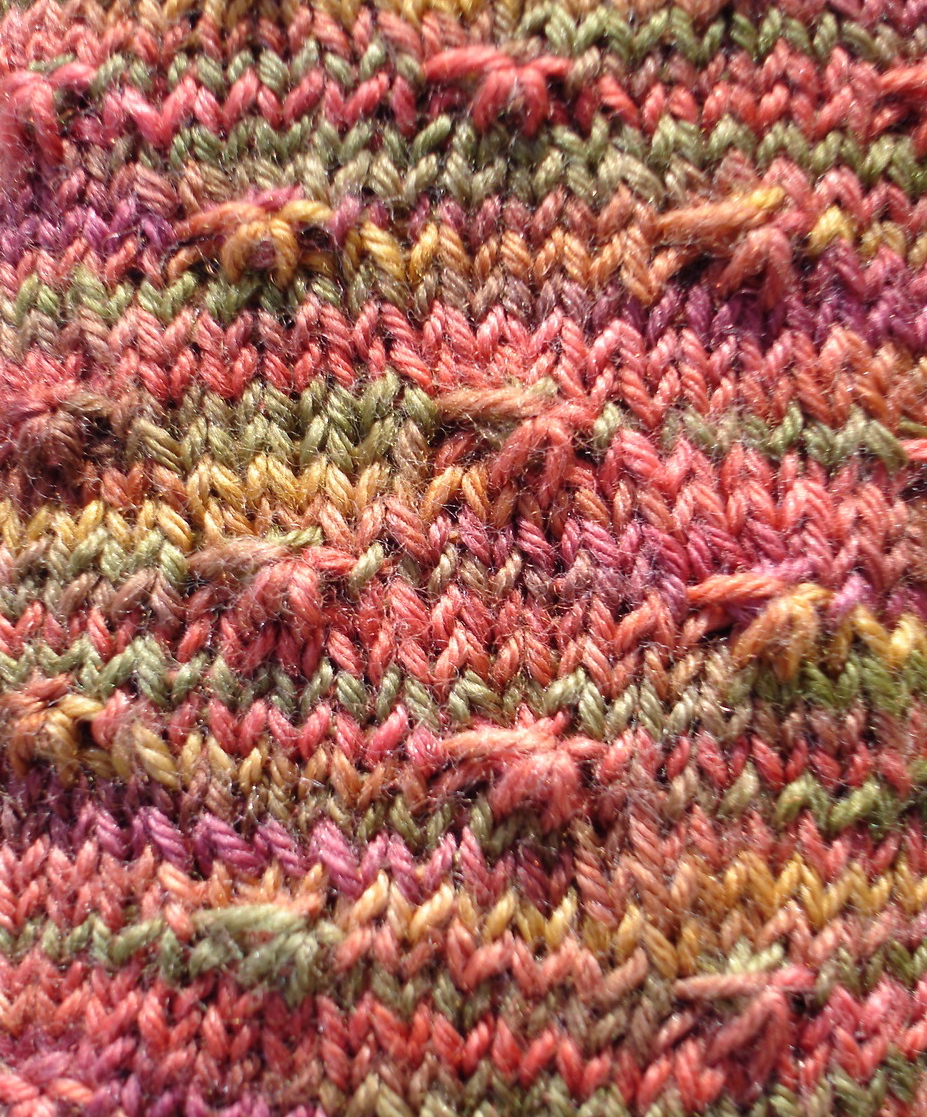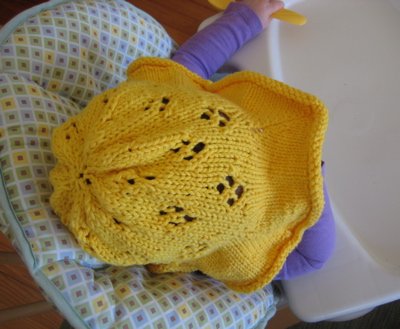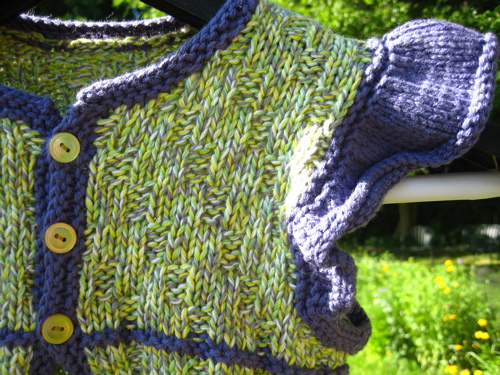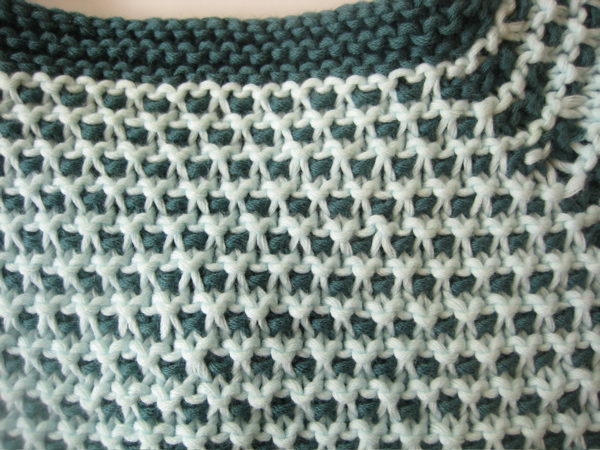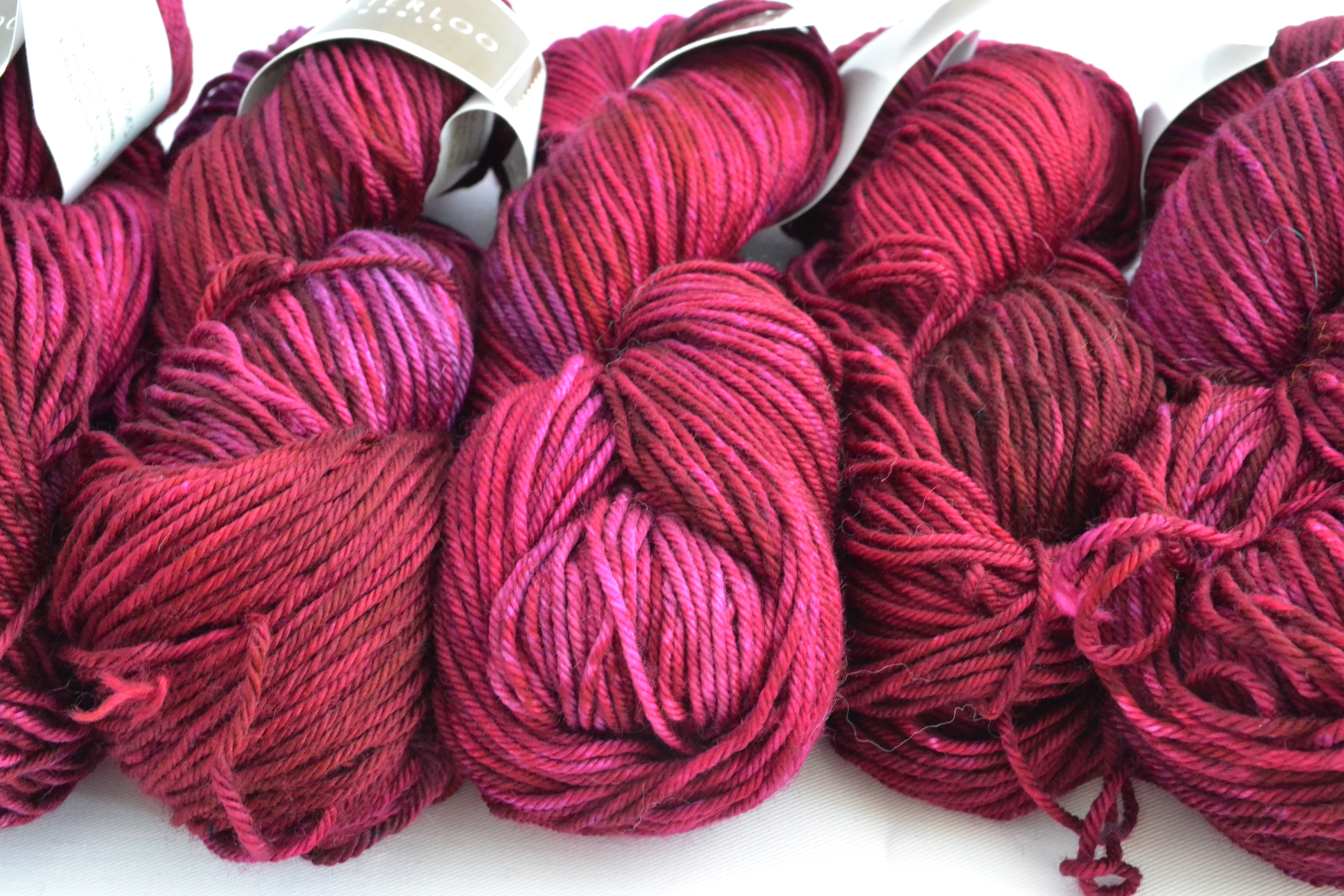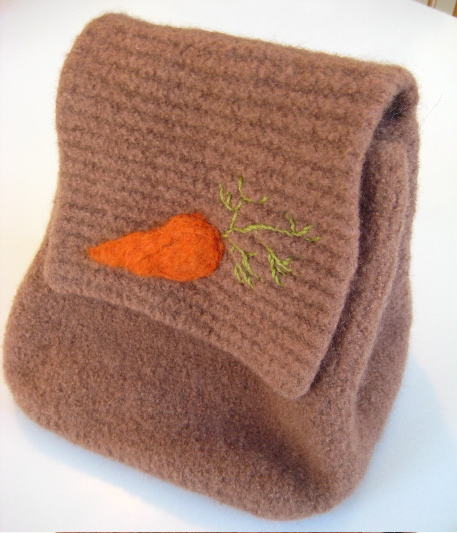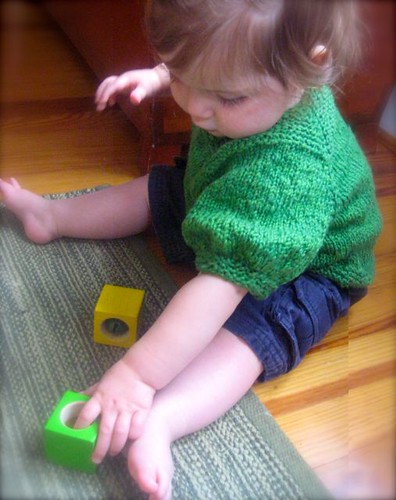Once the knitting is over, the party is over too, as far as I'm concerned.
I detest finishing projects: Sewing up seams, sewing on buttons, weaving in ends, neatening things up.
Yuck. I've left absolutely wonderful projects lying around for months at a time just because there was still blocking to be done and a few buttons to sew -
pathetic! This is why I knit top-down - no dreaded seam-sewing at the end.
Fortunately, weaving in ends is a finishing step you can dispense with, without waiting around for finishing time. You can weave the ends in as you go, while you're knitting the project. You don't even need a darning needle. Here's how.
This simultaneous tail-weaving technique is derived from stranded color knitting (sometimes called "fair isle"), and I have no idea where I picked it up. It's possible that I came up with this on my own at some point, but I'm sure that plenty of other knitters have been doing this for years too. Anyway, to make this easy to see, I'll show you with 2 different colors of yarn knit in stockinette stitch (all K stitches on the right side, all P on the wrong side).
[A note on the photos below: All the photos show the wrong side (WS) of the work, since that's where untidy yarn tails tend to hang out. The purple yarn is the main color (MC), and the yellow yarn is the contrast color (CC)].
1. Knit along in your main color (MC) until the place where you need to join a new yarn (we'll call this new yarn the 'contrast color' or CC for short). Join your CC, leaving a little tail of 6 inches or so. Finish knitting that row/round.
2. On your next row/round, you'll come back to where you left the little CC yarn tail before. Hello!
3. Instead of leaving the CC yarn tail to weave in later, grab it now! Lay the CC tail over your working yarn before working the next stitch. It becomes trapped behind the working yarn, on the wrong side of the work. Be sure to keep the tension even - you may need to give the yarn tail a very gentle tug to make sure that the first CC stitch doesn't get loose and floppy.
4. Repeat that step several more times. I like to trap the CC behind at least 5 stitches. That's it! You can trim your yarn tail now, or wait til finishing time.
Okay, now in the example I showed you above, there was just one yarn tail, because I was keeping the MC ball of yarn attached, perhaps for future rows. But what if that's the end of MC and you've got two yarn tails to deal with? You can do the same thing, but you do it both at the start of the join, and again when you run into the CC tail on the next round. Here's what that looks like:
1. Knit along in your main color (MC) until the place where you need to join a new yarn (we'll call it 'contrast color' or CC for short). Join your CC, leaving a little tail of 6 inches or so. Break the MC, leaving a tail of about 6 inches.
2. Keeping your tension even, twist the MC tail once around the CC and work one stitch. Again, be sure to keep the tension even - a very gentle tug on that MC yarn tail will keep your last MC stitch in shape.
3. Lay the MC tail over your working yarn before working the next stitch and trap it just as described before. Repeat a few more times. Finish knitting that row/round.
4. On your next row/round, you'll come back to the CC yarn tail. Now you'll trap the CC yarn tail behind your working yarn as you go, just as you did before with the MC yarn tail. About 5 stitches or so should do the trick!
So up til now, we've only been talking about how to use this technique for stockinette stitch, which is definitely the easiest stitch to use with this. But you certainly can use this trick to secure yarn ends in several kinds of stitch patterns. Here are some rules of thumb to help you:
- Always keep the yarn tails on the wrong side (WS) of the work.
- To work a purl (P) stitch when the right side (RS) of the work is facing you, lay the yarn tail over the working yarn before moving the yarn to the RS of your work. Don't bring the tail with you!
- If you are going to work several P stitches on the RS, you can't trap the yarn tail on those. Forget about it. You're done. Just be happy with however much you were able to trap and move on.
Let's say you're going to work some K2 P2 ribbing. You can totally trap the yarn tail on those, you're just going to skip a stitch here and there. It will work out fine.
1. K2 P2 along in your main color (MC) until the place where you need to join a new yarn (we'll call it CC again). Join your CC, leaving a little tail of 6 inches or so. Finish working that row/round.
2. On your next row/round, you'll come back to where you left that little yarn tail before. Hi again!
3. Lay the CC tail over your working yarn before working the next stitch and trap it, keeping your tension even.
4. Repeat that step for the next stitch. Then lay the CC tail over the working yarn, move the working yarn to the RS, and work 2 stitches.
5. Bring the working yarn back to the WS and work 2 stitches, trapping the CC tail over the working yarn for those stitches as well. You can trap it again before working the next stitch, and there you are - a securely woven-in yarn tail in K2 P2 ribbing.
I love how tidy and secure this method is, and it eliminates the need to sit around with a darning needle hunting up yarn ends once your project is finished. While other knitters are polishing up their Chibis and fiddling with yarn tails, you can go block your sweater and plan the outfit you'll be wearing with it. It's particularly magical when knitting in the round. Try it and let me know what you think!
Do any of y'all already use this method, or some variation? Where did you learn it? And do you have other tricks for simultaneously weaving in ends when working longer stretches of purl stitches, or openwork?





